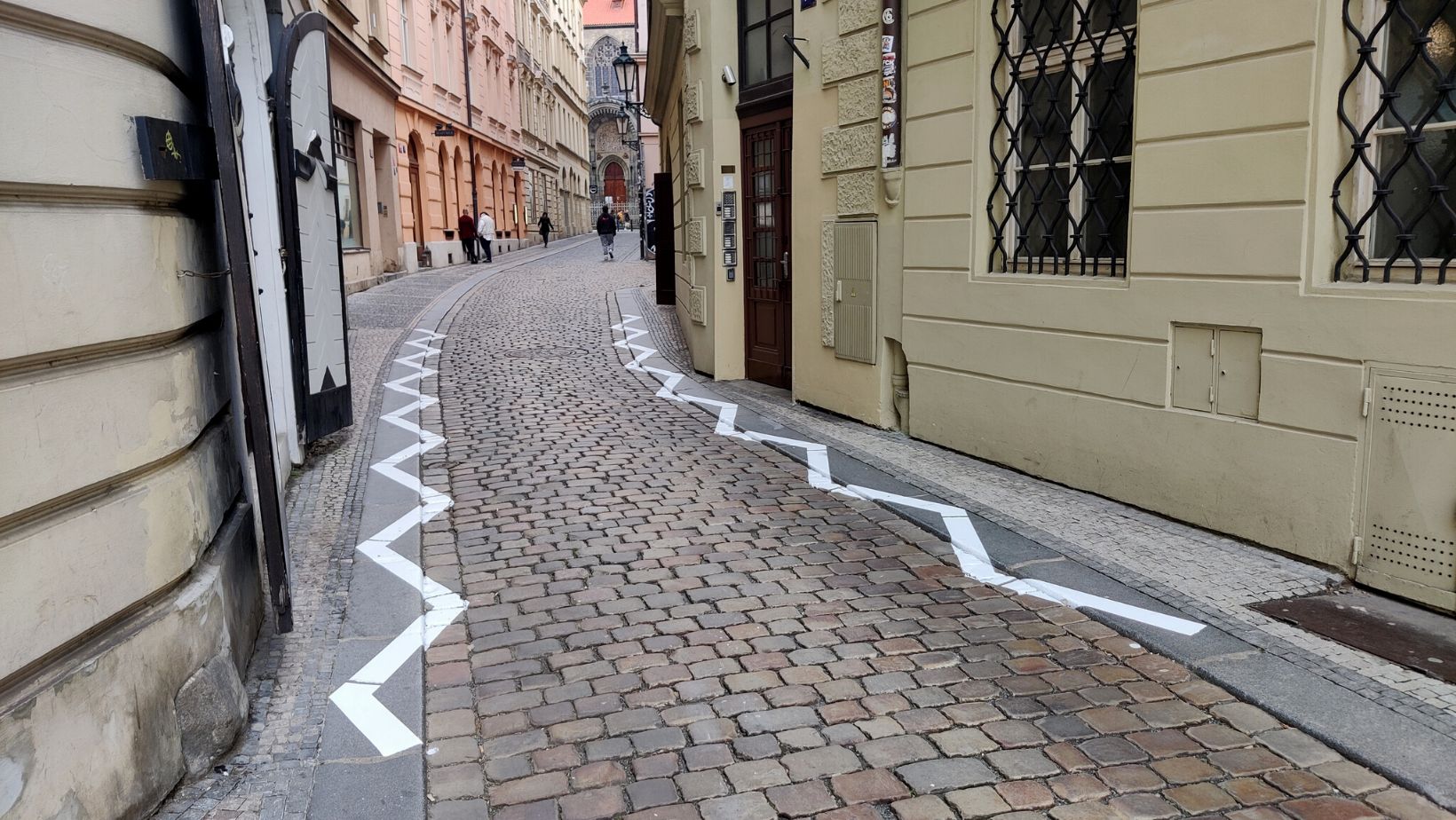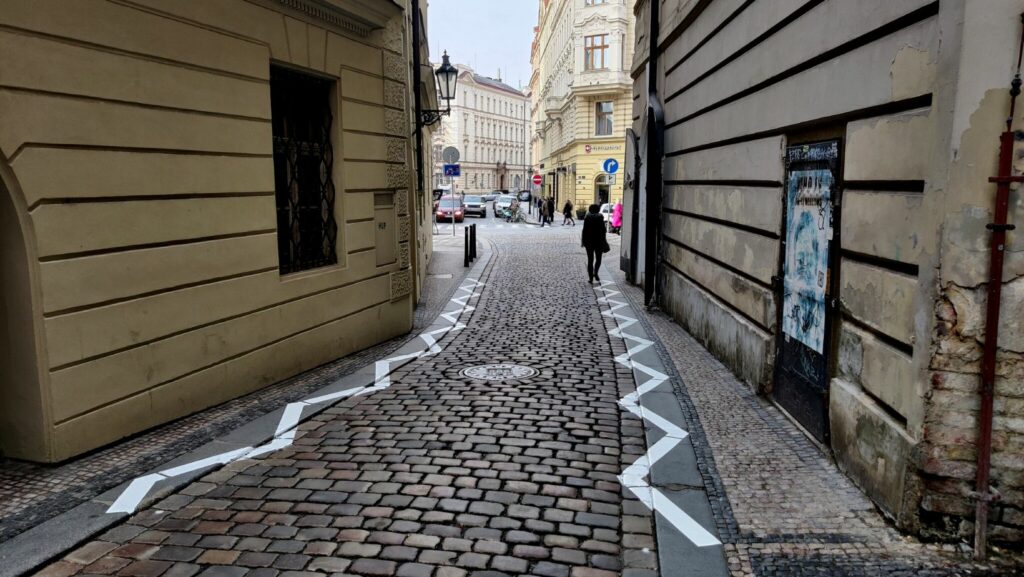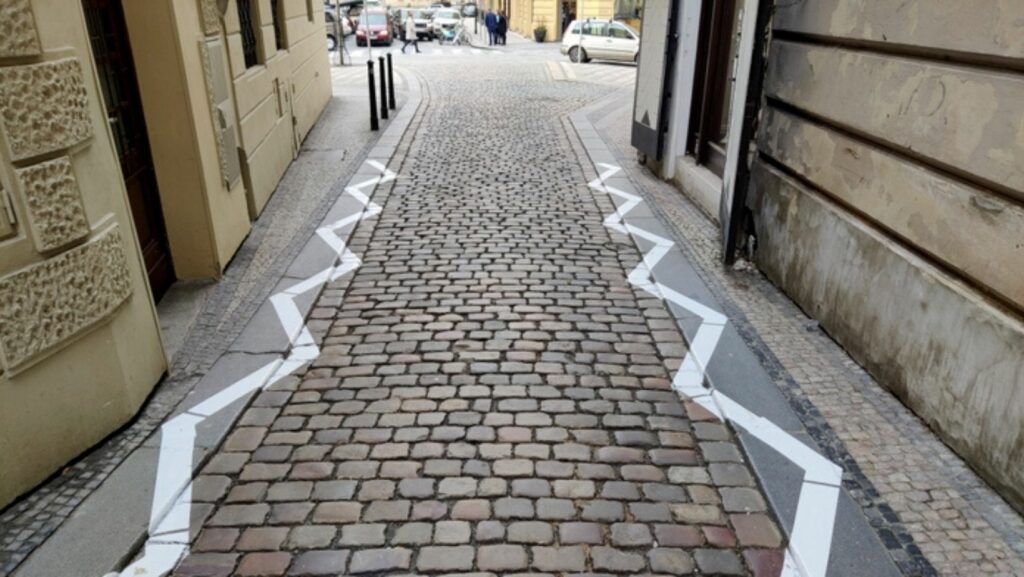Historic Alley or Traffic Playground? Prague Residents Outraged by Road Markings

For about a week now, one of the picturesque streets in the city center – Týnská – has looked more like a traffic playground. The historic character of the center is now complemented by white zigzag lines.
They are meant to improve traffic safety in an area where no more than 20 cars are allowed.
“This is the first time I’ve seen this, and I’m frankly appalled. Aesthetically, it’s horrible,” said Prague 1 Deputy Mayor David Bodeček (Pirates). “I find it very unsightly. It was news to me this morning (Thursday, ed.). But it is a matter for the Prague 1 Transport Department, which is not obliged to consult us on such issues,” the mayor said.
However, Terezie Radoměřská, the Transport Department’s representative, said the measure is intended to improve safety at the site.
“It is for the sake of the people coming out of the house behind the break in the alley. It’s quite narrow at that point and breaks slightly to the left. Drivers have a blind spot there, there’s an exit from the house. Local residents have repeatedly complained to us that it is extremely dangerous to leave the house there,” shes said.
Ludvík Czital, head of the Prague 1 Transport Department, confirms: “In this street, drivers tend to stick not to the middle of the road, but to the inside of the curve. People living in this house often felt threatened here”.

“I don’t agree with this marking. It is the work of a municipal official. I am in contact with Vojtěch Ryvola, the Prague 1 councilor for transport. He has promised to resolve it as soon as possible,” Zdeněk Hřib told TN.cz.
But Robert Kotál, director of the Traffic Academy, sees no problem at the site. “It’s a horizontal traffic sign, called a white zigzag line, and I think it’s placed there absolutely correctly. The street is narrow, and there are children walking there, and it encourages drivers to be careful.”
However, the conservationist’s opinion is uncompromising. “Týnská lane is not very busy. In my opinion, the measure kind of misses the point. It has the same character as spraying graffiti. They are the work of rude people who apply them inappropriately even in a historical environment,” points out Josef Štulc, a lecturer from the National Heritage Institute (NPÚ).

Support Prague Morning!
We are proud to provide our readers from around the world with independent, and unbiased news for free.
Our dedicated team supports the local community, foreign residents and visitors of all nationalities through our website, social media and newsletter.
We appreciate that not everyone can afford to pay for our services but if you are able to, we ask you to support Prague Morning by making a contribution – no matter how small 🙂 .



